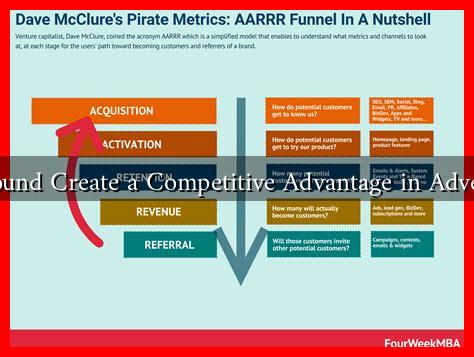-
Table of Contents
- Can Sound Create a Competitive Advantage in Advertising?
- The Psychology of Sound in Advertising
- Case Studies: Brands Leveraging Sound
- 1. McDonald’s and the “I’m Lovin’ It” Jingle
- 2. Intel’s Sonic Branding
- 3. Coca-Cola’s Use of Sound in Advertising
- The Role of Sound in Digital Advertising
- Challenges and Considerations
- Conclusion
Can Sound Create a Competitive Advantage in Advertising?
In the fast-paced world of advertising, brands are constantly seeking innovative ways to capture consumer attention and create lasting impressions. While visual elements have traditionally dominated the advertising landscape, sound is emerging as a powerful tool that can create a competitive advantage. This article explores how sound influences consumer behavior, enhances brand identity, and ultimately drives sales.
The Psychology of Sound in Advertising
Sound has a profound impact on human emotions and decision-making processes. Research indicates that sound can evoke feelings, trigger memories, and influence perceptions. Here are some key psychological aspects of sound in advertising:
- Emotional Resonance: Sounds can evoke specific emotions. For instance, a cheerful jingle can create a sense of happiness, while a somber tone can evoke sadness.
- Memory Recall: Auditory cues can enhance memory retention. A catchy jingle or a memorable sound logo can make a brand more recognizable.
- Brand Personality: The type of sound used in advertising can convey a brand’s personality. For example, a luxury brand may use classical music to evoke sophistication, while a tech company might opt for modern electronic sounds.
Case Studies: Brands Leveraging Sound
Several brands have successfully harnessed the power of sound to create a competitive edge. Here are a few notable examples:
1. McDonald’s and the “I’m Lovin’ It” Jingle
McDonald’s iconic jingle, “I’m Lovin’ It,” is a prime example of how sound can enhance brand recognition. The catchy tune not only sticks in consumers’ minds but also evokes positive emotions associated with the brand. According to a study by the Journal of Advertising Research, brands that use jingles see a 20% increase in brand recall.
2. Intel’s Sonic Branding
Intel’s four-note sonic logo is another example of effective sound branding. This simple yet memorable sound has become synonymous with the brand, reinforcing its identity in the tech industry. The sound is so recognizable that it has been used in various media, from commercials to movies, creating a cohesive brand experience.
3. Coca-Cola’s Use of Sound in Advertising
Coca-Cola has effectively used sound in its advertising campaigns to evoke feelings of happiness and togetherness. The brand often incorporates upbeat music and sound effects that resonate with its target audience, enhancing the emotional connection consumers feel towards the brand.
The Role of Sound in Digital Advertising
As digital advertising continues to grow, the role of sound becomes even more critical. Here are some ways sound can enhance digital advertising:
- Video Ads: Incorporating sound in video ads can significantly increase engagement. According to a study by Wistia, videos with sound have a 50% higher engagement rate than those without.
- Podcasts and Audio Ads: The rise of podcasts has opened new avenues for brands to connect with consumers through audio advertising. Brands that invest in high-quality audio ads can create a more intimate connection with their audience.
- Interactive Sound Experiences: Brands are increasingly using sound in interactive experiences, such as augmented reality (AR) and virtual reality (VR), to create immersive environments that captivate consumers.
Challenges and Considerations
While sound can provide a competitive advantage, brands must also navigate potential challenges:
- Over-Saturation: With the increasing use of sound in advertising, brands risk becoming lost in a sea of noise. It’s essential to create unique and memorable sound experiences.
- Cultural Sensitivity: Sounds can have different meanings across cultures. Brands must be mindful of cultural differences when selecting sounds for global campaigns.
- Consumer Preferences: Not all consumers respond positively to sound in advertising. Brands should consider their target audience’s preferences and tailor their sound strategies accordingly.
Conclusion
In conclusion, sound is a powerful tool that can create a competitive advantage in advertising. By understanding the psychological impact of sound, leveraging successful case studies, and navigating potential challenges, brands can enhance their marketing strategies and foster deeper connections with consumers. As the advertising landscape continues to evolve, those who embrace the power of sound will likely stand out in a crowded marketplace.
For further reading on the impact of sound in advertising, check out this insightful article from Forbes.


